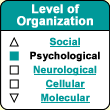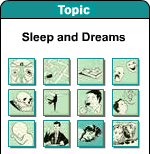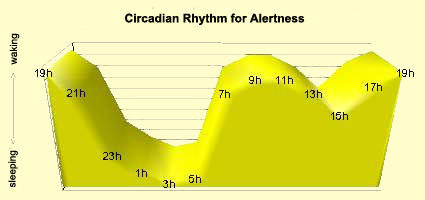|
|



The
Various Speeds at Which We Perceive Time
One of chronobiology’s
important contributions has been to demonstrate that the
human body reacts differently to medications according to
the time of day when they are administered. This idea was
scarcely recognized in the early 1980s. Now it has become
the foundation of an entire discipline, known as chronopharmacology.
By taking the human body’s
internal circadian rhythms into account, health care professionals
can recommend a time of day when taking a given medication
will optimize its benefits or, in some cases, reduce its
side effects and/or toxicity. For example, some medications
that act on certain hormones have no effect at all if taken
at 6:00 PM but are fully effective if taken at 7:00 AM.
|
One noteworthy characteristic
of the human biological clock is that it is independent of
ambient temperature —one of the rare systems in the
human body that is not slowed down when the ambient temperature
is cold or sped up when it is hot. This ability of the body’s molecular
clockwork to compensate for temperature is
essential, because it must maintain its circadian rhythm
in both summer and winter. |
|
|
The behaviour of almost all land animals, including humans, follows
rhythms that are of endogenous origin but that are also modulated
by the daily variations in light and darkness. These cyclical fluctuations
in behaviour are known as circadian
rhythms.
Circadian rhythms are biochemical, physiological, and behavioural
cycles whose period is approximately 24 hours. These cycles are
co-ordinated by molecular
oscillators in the neurons of the suprachiasmatic
nucleus. These oscillators represent the key component in the
human biological clock, which is synchronized with the alternation
of day and night by specialized
light-sensitive cells in the retina.
The reason that the human biological clock needs to be continuously
adjusted to the level of the ambient light is that its endogenous
cycle does not last exactly 24 hours. The actual length of this
period has been studied in numerous
experiments with complete temporal isolation, in which the
subjects were deprived of any light or auditory cues that might
indicate the time of day. The values that these studies have found
for the period of the natural human circadian cycle ranged from
24.2 to 25.5 hours. Thus the Latin roots of the word “circadian”—circa,
meaning “around” and dies, meaning “a
day”—are quite apt.
It is this light-entrained adjustment
mechanism that lets the body’s central clock track the alternation
of day and night precisely. This central clock in turn co-ordinates
the activity of many
other biological clocks that are located in various peripheral
tissues and that have their own molecular oscillators. This
is why most of the body’s major physiological functions fluctuate
with the time of day. Examples include body temperature, hormone
secretion, urine production, blood circulation, metabolism, and
even the growth of hair!
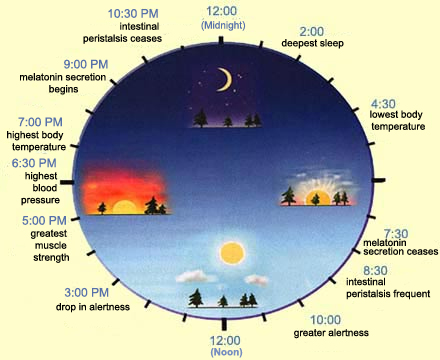
These fluctuations usually go through a peak
and a trough that coincide with particular times of day. For example,
human body temperature is always lowest at night.
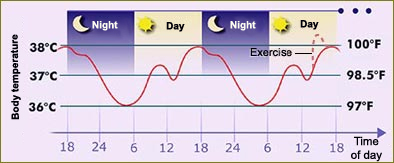
Adapted from: Gerry
Wyder
Of course, body temperature can also fluctuate
under exogenous influences such as physical activity levels, stress
levels, the presence of infection, or simply the ambient temperature.
But in experiments where subjects lie awake but still for 30 hours
or more, endogenous variations in their body temperature are also
observed. In addition to the major drop in body temperature at
night, there is also a slight decline from early to mid-afternoon.
This latter temperature drop, far more than having a full stomach
after lunch, would appear to explain the reduced alertness and
sleepiness that many of us experience at this time of day.
Other physiological parameters also undergo substantial
endogenous fluctuations over the course of the day. The
secretion of several different hormones is one example.
During the daytime, the levels of melatonin, a
hormone manufactured in the pineal
gland, are almost undetectable in
the blood. The pineal gland starts to secrete melatonin
in mid-evening, as darkness falls, and its secretion peaks
between 2:00 and 4:00 in the morning. |
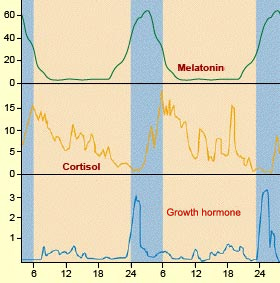 |
In the case of the hormone cortisol,
peak secretion occurs just before a person wakes up, so that this
hormone’s level is highest when the person gets out of bed,
thus contributing to the general activation of the body.
The secretion of human
growth hormone, which is essential for bone and muscle growth in
children, takes place mainly during deep
sleep, which occurs mostly at
the start of the night. In adults, this hormone plays an important role in
metabolism, promoting the synthesis of proteins, helping to burn fats, strengthening
bones, and so on.
Wakefulness and sleepiness
are the two aspects of a single fluctuating state whose circadian
cycle is divided into two sub-cycles of about 12 hours each.
In other words, people who are placed in an
environment devoid of time cues will display a bidaily
rhythm of propensity to sleep.
The first and longest period of sleepiness occurs
around the time that you are used to going to bed and is deepest
between 3:00 AM and 6:00 AM. This is the time of day when
your metabolism and body temperature are at their lowest. So
is your alertness; if you are awake, you are physically clumsier,
and your mind feels sluggish.
The second daily period of sleepiness occurs
12 hours later, between 2:00 PM and 4:00 PM.
This period is shorter than the one that occurs
at night, but we all know it well—it’s
the mid-afternoon slump. Contrary to popular
belief, it has nothing to do with the heat of
the afternoon or with digesting the noontime
meal. Studies have shown that people who live
in the warm temperatures at the Equator experience
two troughs in their wakefulness/sleepiness cycle
just as North Americans do, and that people feel
sleepy in the afternoon even if they haven’t
eaten any lunch. (Moreover, most people don’t
experience this same kind of sleepiness after
breakfast or dinner.)
Thus, the fluctuations in our wakefulness
do in fact depend on our internal biological clocks. And
a short nap in
the afternoon would appear to be beneficial for most people. |
|
|



